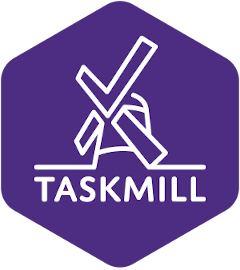Let’s play a little game. True or False: Scrum requires no planning. Your initial thought might be that this statement is true – no planning phase is needed in order to start and run a Scrum project! Is your insight based on briefly reading the Scrum Guide or getting familiar with the Scrum basics? Then you might be wrong.
If you are coming from the waterfall project management world, you might also be terrified to see that Scrum does not require an initial planning phase at all. As the Scrum Guide states, all you need is some backlog items, not even drilled to the bottom with all the details and information, a small team and you are ready to go! Well, let’s stop here for a while.
The argument for a shorter planning stage usually is that while the team is wasting their time on planning, life moves on, customers need change and you find yourself planning a product that no one needs anymore. Well, let’s try to analyse how work actually happens in Scrum and how much planning is required in order to create a valuable product or at least to get started with it.
What actually is the product backlog? And how does the wizard Product Owner pull it together? How much time does it take to come up with an initial list of product related user stories? What does the development team do in order to coordinate their activities? How does the team ensure they are working efficiently and know what to do?
Backlog creation requires quite a lot of homework: you need to study the potential market and figure out if the product analogues already exists, think of some features that would make your product valuable and unique, collect all the customer’s needs and wishes, prioritize them – the list goes on. You can’t disagree that all of this, actually, takes quite some time. And what are these activities, if not planning?
In addition to backlog creation, Scrum will require some more time and dedication. Even if these events are not listed anywhere as “planning meetings”, their only purpose is to plan the upcoming work and figure out, what direction the team should take next:
- Sprint planning for about half-a-day to create a game plan for every sprint;
- 15-minute-long daily stand ups that can generate subjects for further discussion on work planning;
- Sprint review for about another half-a-day to make sure the delivered increment is corresponding to your customer’s needs, they are happy with it and can give you further details on what they would want you to do next;
- Sprint Retrospective, where the Scrum team comes together to analyse the past sprint and plan how they can improve their productivity and ways of working;
- While the team is working on current user stories, upcoming ones need to be produced and estimated. Here comes the backlog refinement meeting, that could take up quite a lot of time for the entire team.
Well, after doing some math, it turns out that different planning activities in Scrum are evenly spread out and actually not visible at all, at the first glance. If you have no experience in Scrum, it might sound like there is no planning happening and the team moves like a blind kitten. But reality shows the opposite: all Scrum events do involve planning in one way or another and all the planning activities together can take up to 30% of the time every week!
So in the end, is it really true that there is no planning in Scrum? After trying Scrum out, some teams find out that there is quite a lot of planning required. And what do they do? They try to minimize it by extending the sprint length. In four-week-sprints, the time spent on all the sprint events is a little reduced, sure, but you are missing the opportunity to inspect the product together with the customer stakeholders and that might result in a lack of corrective actions at an early stage as well as customer dissatisfaction, as the value has been promised to be delivered frequently.
In the end, sprint length is to be decided by every team for every specific case in order to keep both the team and the customer happy. But you can rest assured that if you follow the Scrum framework, your work will be thoroughly planned. The main difference in planning as opposed to waterfall, is that in Scrum it is evenly distributed in time throughout the whole project length and can help adapt to the changing world and customer needs.
